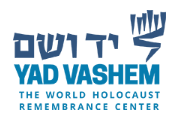 Wyznanie Dehnela: Mój dziadek chciał dokonać pogromu Żydów w Węgrowie, ale to oni spuścili mu manto
Wyznanie Dehnela: Mój dziadek chciał dokonać pogromu Żydów w Węgrowie, ale to oni spuścili mu manto
Jacek Dehnel
 Jacek Dehnel (Fot. Rafał Malko)
Jacek Dehnel (Fot. Rafał Malko)
Są rodzinne historie, które opowiada się wielokrotnie, są i takie, które przebijają się tylko raz, jakby przypadkiem, nieśmiało – co nie znaczy, że są mniej ważne. Przeciwnie. To, co wstydliwe, przysypane, ujawniane bez entuzjazmu, bywa pod pewnymi względami więcej mówiące.
Ta historia do takich właśnie należy. Usłyszałem ją w Węgrowie, lata temu, w czasie jednego z rodzinnych zjazdów. W niedalekiej Sterdyni prapradziadek August Wilhelm Dehnel, niegdysiejszy powstaniec styczniowy, był rządcą majątku państwa Górskich, w Węgrowie jego syn, Marian, lekarz w Legionach, był w latach międzywojennych dyrektorem szpitala. Co znaczyło, że był również bardzo zajęty, więc nie miał co robić z dwoma synkami, odumarłymi przez matkę, więc wysyłał ich kolejno do różnych szkół, w tym do korpusu kadetów.
Jednym z tych chłopców był mój dziadek Jacek. Ile miał wtedy lat? Dwanaście? Trzynaście? Przyjechał do Węgrowa na wakacje, a może tylko na parę dni, kto wie, może na Wielkanoc – Wielkanoc pod pewnym względem pasuje – w każdym razie w mundurku kadetów. A z nowej szkoły prócz mundurku przywiózł także nowe przekonania.
Kiedy zatem jego ojciec robił obchód po szpitalu, mały Jacuś postanowił z kolegą czy z bratem zrobić pogrom. Ja wiem, że to brzmi dziwnie, ale to właśnie wymyślił: pogrom miejscowej ludności żydowskiej (czyli mniej więcej połowy miasta), a w szczególności chłopców z chederu.
Chłopcy z chederu nie spełnili wszakże narodowych fantazji o Żydzie słabowitym a strachliwym i na całe szczęście spuścili solidne manto drużynie pogromu, w tym mojemu przyszłemu dziadkowi. Na domiar złego, kiedy pobity sromotnie wrócił do domu, dostał lanie po raz drugi, tym razem od własnego ojca, który był nie endekiem, tylko starym, brzydzącym się antysemityzmem pepeesowcem. Opowieść wspomina jeszcze, że dla szkoły, jak się później okazało, zasadniczym problemem było zapodzianie w trakcie pogromowej klęski jakiegoś ważnego kordzika czy innego elementu umundurowania, co stanowiło straszliwą plamę na honorze przyszłego żołnierza, więc do Węgrowa wydzwaniano czy pisano oburzone listy. Nic natomiast nie wiadomo, by jakiekolwiek emocje wzbudziła wśród żołnierskiej kadry nauczycielskiej istota zajścia, czyli sam pogrom.
Chowanie głowy w piasek
Dziadek nie został antysemitą, a mimo straszliwej plamy na honorze żołnierskim w postaci zagubienia kordzika czy czegoś tam innego wyrósł na bohatera. Ale przecież, myślę sobie, było dziełem przypadku to, że jego ojciec był pepeesowcem, a nie endekiem, jak również to, że taki „niewinny pogromik” nie skończył się niczym poważniejszym niż pognębienie agresorów. Pokolenie od nich starsze podejmowało takie decyzje świadomie, oni na razie tylko małpowali: nauczycieli, rodziców, księdza z sodalicji, stryja, sąsiadkę. Ale potem przecież w coś krzepli. Wybierali już z rozmysłem.
Czemu o tym wszystkim piszę? Przeczytałem właśnie zapowiedź książki Jacka Leociaka „Młyny Boże”, a tam cytat z zapisków Józefa Górskiego. Zbieżność nazwisk nieprzypadkowa, terenów także: Józef odziedziczył majątek po swoim stryjecznym dziadku (u którego rządcą był August Wilhelm Dehnel), w czasie II wojny światowej sprzedawał drewno z majątku Niemcom, którzy coś budowali w nieodległej Treblince. Znaczy to, że na baraki, wieżyczki strażnicze i pierwsze drewniane komory gazowe poszły może sosny, które sadził jeszcze, nic o tym nie wiedząc, mój prapradziadek.
Czy czyni go to czegokolwiek winnym? Nie. Ale tych, którzy sadzili antysemityzm w głowach dzieciaków – i owszem. Bo kilkanaście lat później miały od tego zależeć szanse przeżycia konkretnych osób: tego krawca, tamtej sklepikarzowej, tych synów właściciela kina, tamtej siostry rabina.
Udawanie, że przedwojenny antysemityzm nie miał na to wpływu, że kazania przedwojennych księży, artykuły katolickich publicystów, mowy endeckich polityków, bojówki narodowców nie miały wpływu na te wybory, jest tchórzliwym chowaniem głowy w piasek.
Zawartość publikowanych artykułów i materiałów nie reprezentuje poglądów ani opinii Reunion’68,
ani też webmastera Blogu Reunion’68, chyba ze jest to wyraźnie zaznaczone.
Twoje uwagi, linki, własne artykuły lub wiadomości prześlij na adres:
webmaster@reunion68.com



